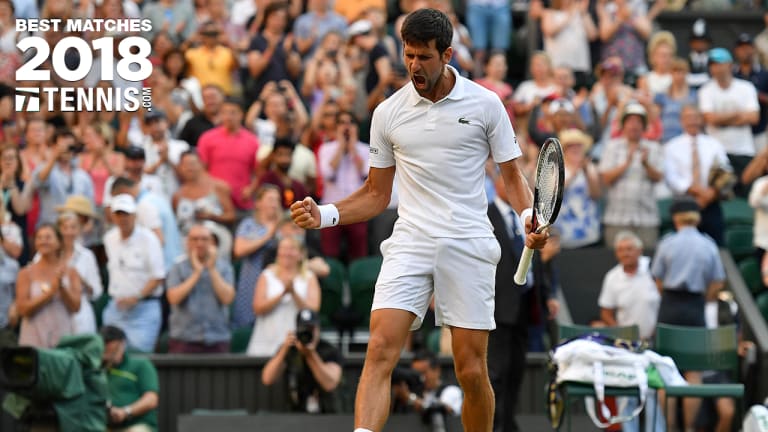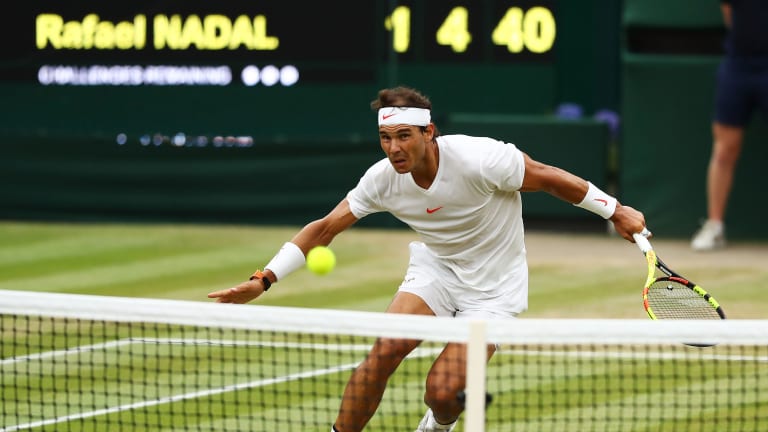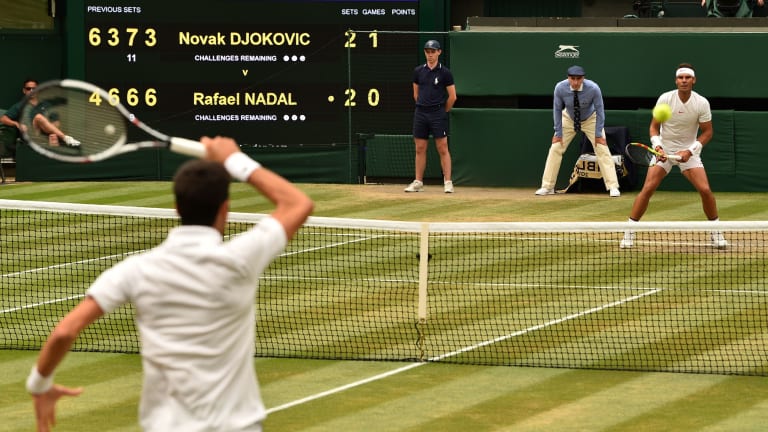At the end of this year’s Championships, we were lucky enough to see a match that was every bit as good as the 2008 final. This time it was between Rafael Nadal and Novak Djokovic, but in terms of quality, drama, suspense, stakes, shot-making, emotion and any other on-court measurement you want to consider, it lived up to its legendary predecessor. Due to extenuating circumstances, though, the chances seem slim that Djokovic vs. Nadal '18 will join Roger Federer vs. Nadal '08 on the Mt. Olympus of tennis matches.
First, while this five-hour marathon essentially determined the Wimbledon champion, it was a semifinal rather than a final. Second, instead of ending in dramatic darkness, the way Federer vs. Nadal did, Djokovic vs. Nadal was stopped because of a local curfew on its first day, and played under a roof despite dry conditions the second day. The latter was a controversial decision. Nadal wanted the roof off, because (a) Wimbledon is an outdoor event, and (b) he likes to play outdoors. Djokovic wanted the roof closed, because (a) the match had begun with the roof on, and (b) he likes to play indoors. Officials rightly kept the roof on to keep the conditions consistent. (Hopefully, though, Roofgate will lead the tournament to be stingier with its use in the future.)
But if those unfortunate and distracting circumstances robbed this contest of the stage and presentation it deserved, they only made the level of play that Djokovic and Nadal reached together that much more impressive.
Coming into this match, the Serb and the Spaniard had faced off 51 times over 12 years, but only twice before had they gone to a fifth set. Djokovic won 7-5 in the fifth at the 2002 Australian Open, and Nadal returned the favor, 9-7 in the fifth, at the French Open the following spring. Six years later, the Serb and the Spaniard finally brought their five-set act, and their finest tennis, to Centre Court.


